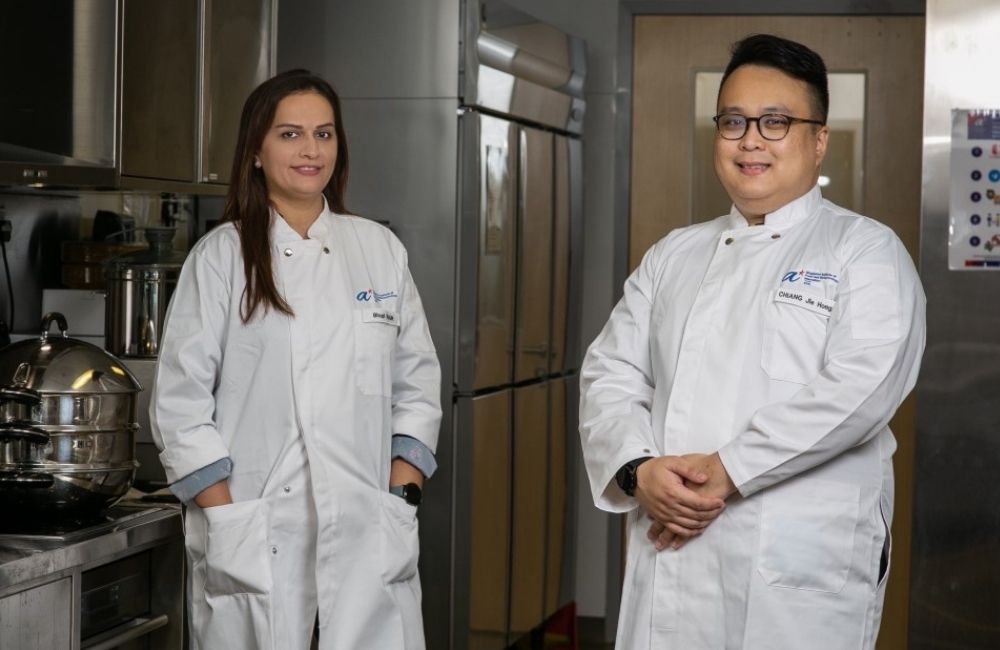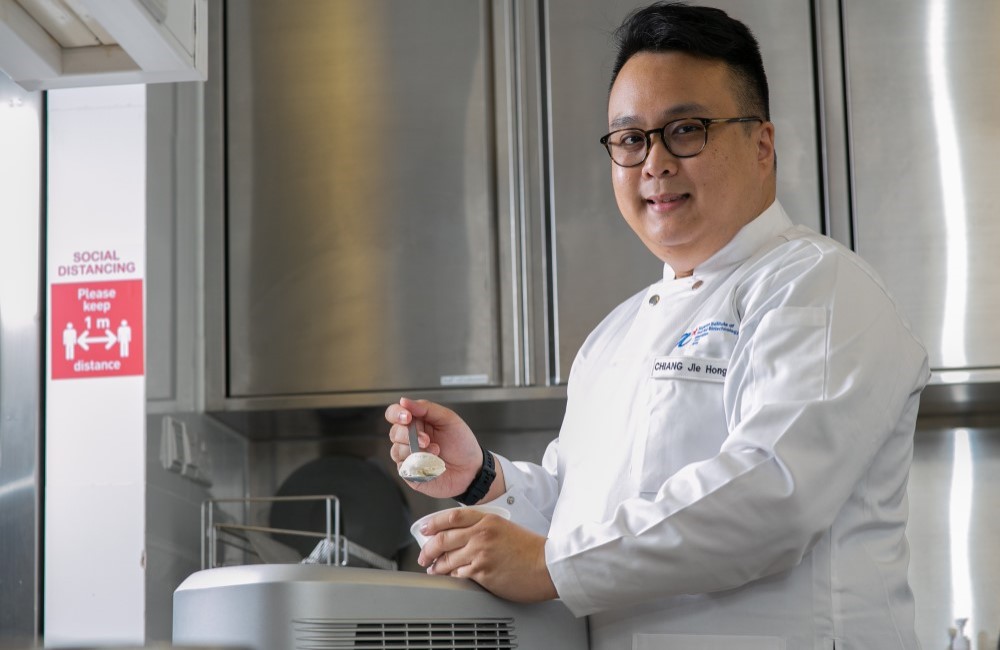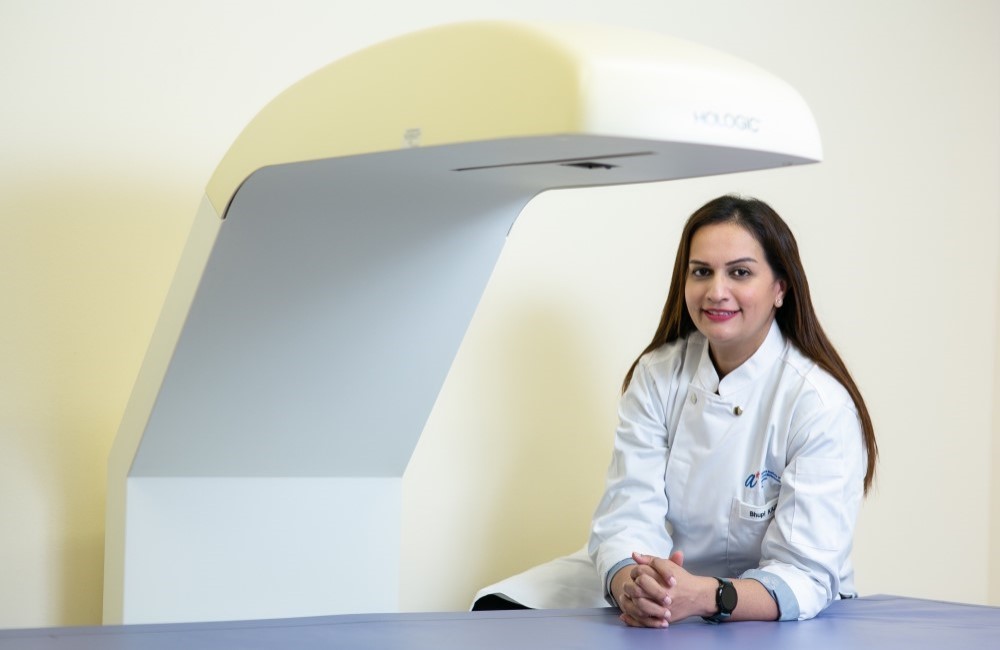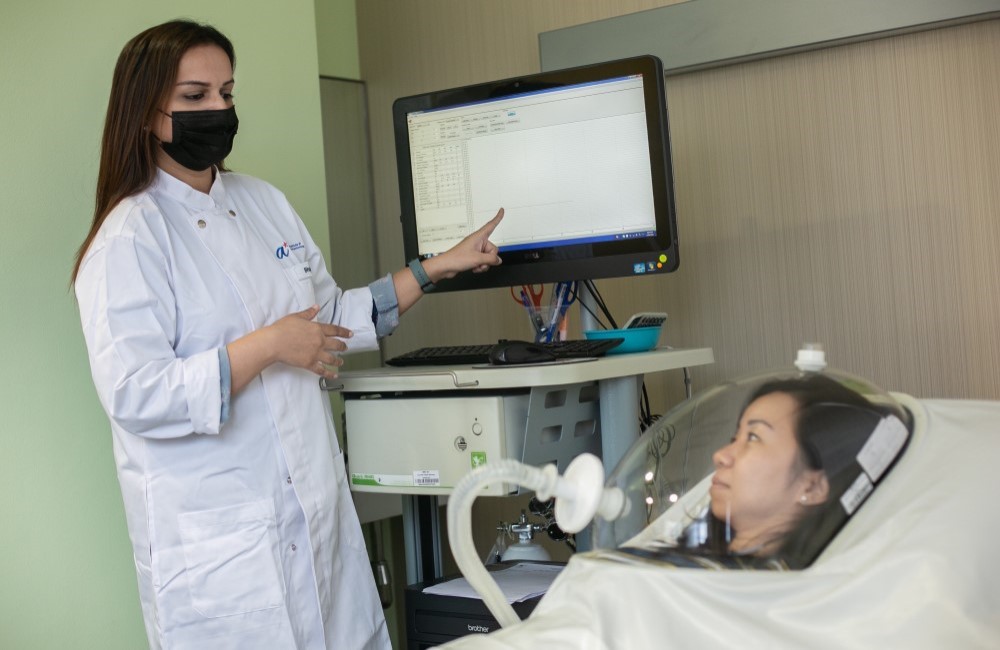Beefing Up Singapore’s Food Security With R&D
Formulating tasty plant-based ice-cream treats and discovering the curative powers of food are all part of a day’s work for researchers at the Nutrition Division of Singapore Institute of Food and Biotechnology Innovation (SIFBI). Ms Kaur (left) and Dr Chiang (right) have been working with SIFBI for 9 and 2 years, studying topics on food science and technology.
Ms Kaur (left) and Dr Chiang (right) have been working with SIFBI for 9 and 2 years, studying topics on food science and technology.
GROWING LOCAL FOOD PRODUCTION WITH R&D
Singapore imports over 90 per cent of its food today—a strategy that may prove inadequate as challenges like climate change and disease outbreaks threaten to cause major disruptions to the global supply chain.
The Singapore Food Story is about ensuring that we continue to have food on our tables. A key strategy is to increase local food production and produce 30 percent of our nutritional needs locally by 2030.
To turn food challenges into advantages, the Singapore Food Agency (SFA) and A*STAR have jointly developed the Singapore Food Story R&D Programme. This focuses on sustainable urban food production, advanced biotech-based protein production, and food safety science and innovation.
Both Research Fellow Dr Chiang Jie Hong and Senior Research Officer Ms Bhupinder Kaur at A*STAR’s Singapore Institute of Food and Biotechnology Innovation (SIFBI) are part of the R&D teams working towards strengthening Singapore's food safety and supply.
DREAMING UP PLANT-BASED ICE CREAM
Using plant-based alternatives to replicate the luxurious creaminess of premium ice-cream has been a key research focus for Dr Chiang Jie Hong, Research Fellow, Singapore Institute of Food and Biotechnology Innovation (SIFBI), A*STAR. He graduated with a Bachelor of Food Technology (Hons) and PhD in Food Technology in Massey University, New Zealand. Dr Chiang studies how to improve textural, nutritional and sensory properties of plant-based ice cream by different raw materials and processing parameters.
Dr Chiang studies how to improve textural, nutritional and sensory properties of plant-based ice cream by different raw materials and processing parameters.
From his point of view, the perfect plant-based ice cream should not be short on nutritional content. So that it can be suitable even for the elderly who appreciate ice cream’s soft and cool texture, and may not consume enough calories in their daily diet. The ice cream recipe that he and his team are developing has a substantial amount of protein, fat, and calories.
To perfect the texture and desired nutritional content of the plant-based ice cream, they switched up some raw materials and the amount of stabiliser used in the formulation. They also used a different ratio of protein powder and plant-based milk powder, as well as different fat sources such as sunflower oil and coconut oil, to hit the right spot.
The team often uses common and easily sourced plant proteins such as soy, pea, chickpea, mung bean, to develop the plant-based alternatives. The aim is to avoid a situation where there is a shortage of, or sudden increase in the raw materials available.
Besides ice cream, Dr Chiang and his colleagues are also working on several other dairy alternatives, such as plant-based yoghurt, milk, and pudding to meet shifting global demand for plant-based foods1
Besides conducting research, Dr Chiang is also keen on taking STEM students under his wing. Currently, he mentors and supervises five research officers, as well as final year project students through the SIT (Singapore Institute of Technology)-Massey research collaboration, and interns from NUS and SIT-Massey.
In addition, Dr Chiang manages SIFBI’s research collaborations with other A*STAR entities, such as the Microscopy Platform (AMP), Institute of Molecular and Cell Biology (IMCB) and Institute for Infocomm Research (I2R). He has been awarded the Singapore Food Story R&D programme on Future Foods: Alternative Proteins IAF-PP grant as Principal Investigator, and seed challenge as co-Principal Investigator.
The qualities he looks for in aspiring food technologists? Confidence, diligence, and the ability to adapt and think strategically.
“Solving food problems in the lab effectively requires a systematic and scientific approach, such as using factorial and mixture experimental design to develop an optimised formulation that can satisfy consumers,” said Dr Chiang.
FIRST GI DATABASE OF ASIAN FOOD FAVOURITES
 Ms Kaur and a DEXA machine used for detailed body composition (including bone mineral density, bone mineral content, fat mass and fat free mass) for her research.
Ms Kaur and a DEXA machine used for detailed body composition (including bone mineral density, bone mineral content, fat mass and fat free mass) for her research.
Chicken curry puff, hokkien mee, nasi lemak, and chapatti may be familiar Asian favourites, but their “Glycaemic Index” (GI) used to be a mystery as most GI tables were based on foods consumed in western countries.
Things changed when an A*STAR team that Ms Kaur was part of researched and released “A Glycaemic Index (GI) Compendium of Non-Western foods”, a list of 940 food items that is the first such comprehensive database of the GI of Asian foods. This extensive compendium had taken months to compile and was completed despite the pandemic.
While the pandemic had impeded the recruitment of participants for clinical trials for other projects, it gave her time to reflect while working from home on important manuscripts.
Ms Kaur focused her attention on the importance of nutrition and immunity. The result was a publication related to the GI database on “Chrono-nutrition in the Management of Diabetes”. It looked at the time of day being an influencing factor on the postprandial glucose response to a meal, and therefore on type 2 diabetes. The study found that it was beneficial to consume meals early in the day than in the evening, and that increasing protein and fat content for evening meals is also helpful to improve postprandial glycaemia. In addition, the study concluded that the order in which food is consumed in a meal also makes a difference, with the preferred order being vegetables first, followed by meat and then lastly rice.
Ms Kaur’s interest in food innovation has seen her derive great satisfaction from discovering new knowledge, especially in how food and nutrition directly affect Singaporeans. Examples include the development of low glycaemic index (GI) food products to stabilise blood glucose over time; and trials that utilise innovative tools such as the Continuous Glucose Monitoring System (CGMS™) for the first time in Singapore, to monitor blood glucose fluctuations after food consumption.
“That is the most satisfying part of my work, knowing that it can have an immediate, direct and tangible impact on people. All the hard work put in will positively impact society, which is truly rewarding,” said Ms Kaur.
Shifting gears from being a trained educator, Ms Kaur’s strong interest in food saw her complete her Masters in Food Science and Technology in University of Queensland (Australia). She then became one of the first few researchers to join the Clinical Nutrition Research Centre (CNRC) set up in A*STAR in 2011.
Her research expertise and interest is in human nutrition, particularly in glycaemia, insulinaemia, appetite and energy intake regulation. In line with national priorities, her research work also covers clinical nutrition, food structure and food fermentation. Currently, she is looking at incorporating novel ingredients and innovative processes for new and healthier food products to suit the Asian palate. Ms Kaur explaining to a clinical trial volunteer the results of the indirect calorimetry, which measures resting energy expenditure.
Ms Kaur explaining to a clinical trial volunteer the results of the indirect calorimetry, which measures resting energy expenditure.
While Ms Kaur’s research revolves around food, a common misconception is that food scientists' role is similar to that of cooks and chefs.
“We watch our cooking through the lens of science. For example, when rice is cooked, we notice how it becomes soft and thick due to starch gelatinisation. There is huge, complex chemistry involved here that extends to health,” explained Ms Kaur.
“Whilst we are happy to be perceived as cooks, we are actually ‘scientific cooks’. We understand the science of cooking, which makes it a most rewarding discipline, as food science and nutrition impacts many lives.”
1 https://www.foodnavigator.com/Article/2020/11/23/Six-plant-based-trends-for-food-and-beverage-firms-to-exploit-in-2021
A*STAR celebrates International Women's Day

From groundbreaking discoveries to cutting-edge research, our researchers are empowering the next generation of female science, technology, engineering and mathematics (STEM) leaders.
Get inspired by our #WomeninSTEM
